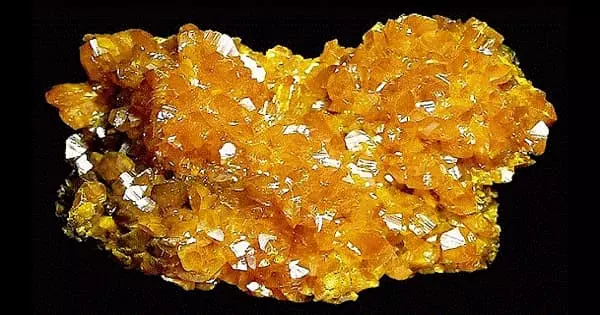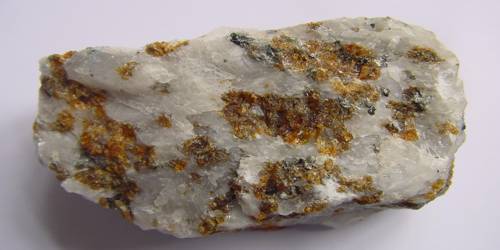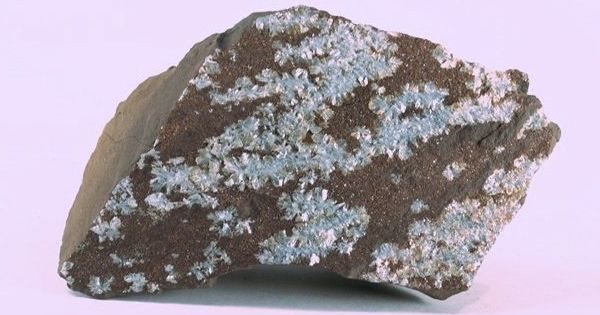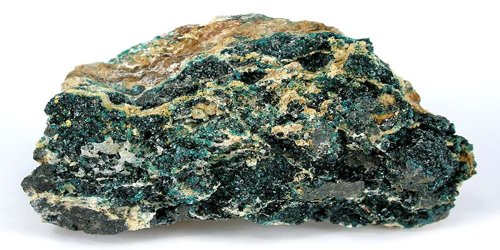Orpiment is an orange-yellow arsenic sulfide mineral with the formula As2S3. It is a rare orange to lemon-yellow mineral composed of arsenic trisulfide. It is found in volcanic fumaroles, low-temperature hydrothermal veins, and hot springs and is formed by sublimation as well as the decay of another arsenic mineral, realgar. It is considered fairly lightfast, but it can darken significantly in some cases, and it is incompatible with lead and copper pigments. It is found naturally as a mineral and can also be synthesized artificially.
It was used as a pigment in European painting from very early times, including manuscript illumination and polychrome sculpture, and by the 16th century, it had almost become a standard material on the palette in Venice.
General Information
- Category: Sulfide mineral
- Formula (repeating unit): As2S3
- Crystal system: Monoclinic
- Crystal class: Prismatic (2/m) (same H-M symbol)
- Color: Lemon-yellow to golden or brownish yellow
Physical properties
Orpiment is a common monoclinic arsenic sulfide mineral. It has a Mohs hardness of 1.5 to 2 and a specific gravity of 3.49. It melts at 300 °C (570 °F) to 325 °C (620 °F). The luster is resinous on freshly broken surfaces but pearly on cleavage surfaces.
- Crystal habit: Commonly in foliated columnar or fibrous aggregates
- Twinning: On {100}
- Cleavage: Perfect on {010}, imperfect on {100};
- Tenacity: Sectile
- Mohs scale hardness: 1.5–2
- Luster: Resinous, pearly on cleavage surface
- Streak: Pale lemon-yellow
- Diaphaneity: Transparent
- Specific gravity: 3.49
- Optical properties: Biaxial (−)
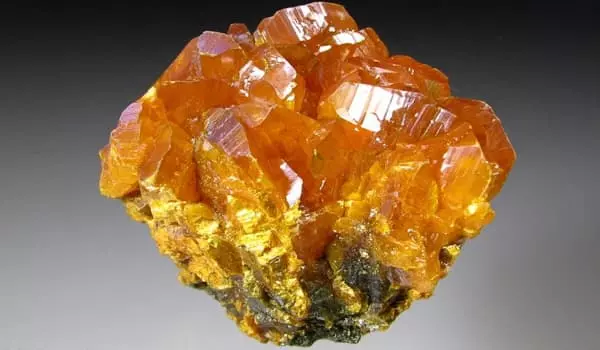
Historical uses
Orpiment was traded in the Roman Empire and used as a medicine in China, despite the fact that it is extremely toxic. It has been used as a fly poison and to poison arrows. Because of its striking color, it piqued the interest of alchemists in both China and the West who were looking for a way to make gold. It has also been discovered in the wall decorations of Tutankhamun’s tomb and ancient Egyptian scrolls, as well as on the Taj Mahal’s walls.
For centuries, orpiment was ground down and used as a pigment in painting and sealing wax, and it was even used as a correction fluid in ancient China. Until the nineteenth century, it was one of the few clear, bright yellow pigments available to artists. However, due to its extreme toxicity and incompatibility with other common pigments, such as lead and copper-based substances such as verdigris and azurite, its use as a pigment was discontinued when cadmium yellows, chromium yellows, and organic dye-based colors were introduced during the nineteenth century.
Orpiment is mentioned in Micrographia by Robert Hooke in the 17th century for the manufacture of small shots.
Contemporary uses
Orpiment is now used to make infrared-transmitting glass, oilcloth, linoleum, semiconductors, photoconductors, pigments, and fireworks. Orpiment, mixed with two parts slaked lime, is still widely used as a depilatory in rural India. It is used to remove hair from hides in the tanning industry.
Occurrences
Orpiment is found naturally in volcanic fumaroles, hydrothermal veins, hot springs, and as a Realgar decomposition product. The Czech Republic, Romania (Copalnic), Germany (Andreas-Berg), Switzerland (Valais), Turkey (ölemerik), Macedonia, Japan, and the United States all have deposits (Utah, Nevada, Wyoming).
